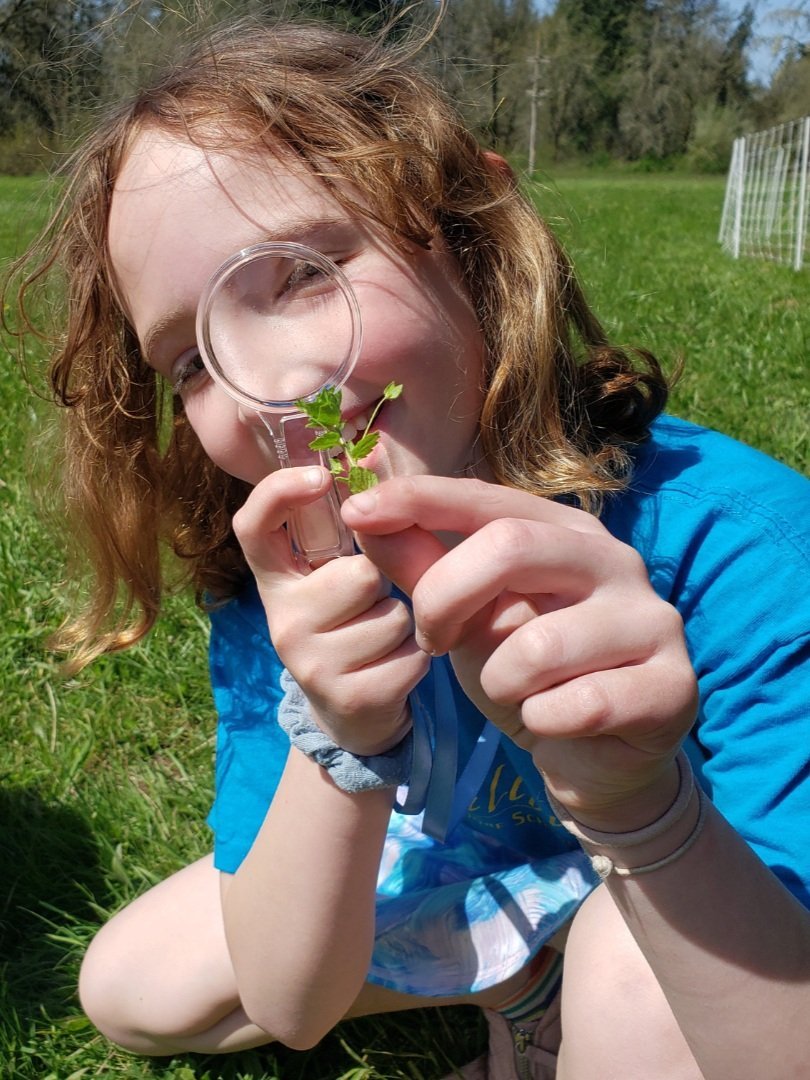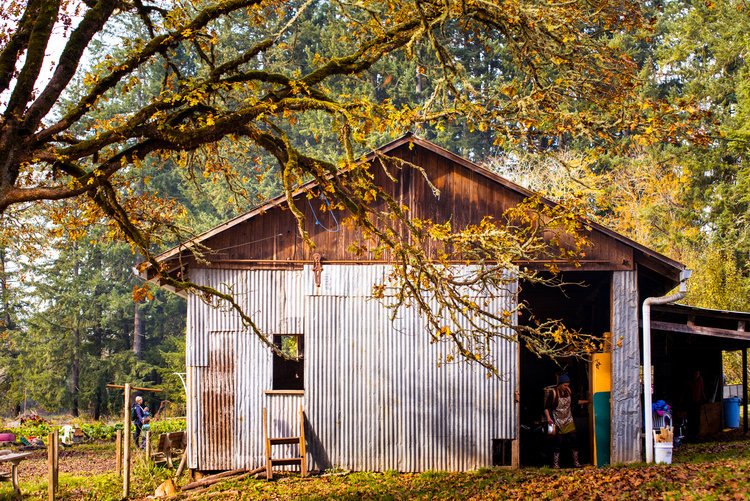
OUR
FARM
Swallowtail School
Land Acknowledgement
For thousands and thousands of years — since long before humans can remember — the land on which we stand thrived as oak savanna, tended by the native people. The Tualatin Kalapuya and other tribes gathered, as we do today, under ancient oak trees. They returned each fall to the warmth of this sacred ground. They collected acorns that fed them through the cold winters. And by way of story and song, they passed from elder to child the sacred knowledge of how to care for this land. They learned to burn fires to protect the oaks that anchor so much life around us, from the watchful owl to the flitting butterfly, the prancing deer to the hardworking squirrel.
Today, we honor the light of the fire cultivated here long before we arrived, and those who kept it burning. We recognize the sacrifices forced upon the original stewards of this place, and we commit to keeping the fire they kindled for so long burning within our community. We do this by caring for this land and for all the creatures that call it home, and by sharing stories that teach us how. We do this so that this land can remain sacred not just for the children gathered here today, but for their children, and theirs after them.
For this land and all it gives us, we give thanks, with our words, with our hearts and with our hands.
The role of
the farm at Swallowtail
The joy and freedom experienced by the children when they visit the Swallowtail farm is what brings many families to our school.
At the farm, students engage in sustainable agriculture and learn about native habitats. Activities supplement the classroom curriculum, particularly animal science, physics, chemistry, and botany.
From festivals and campouts to quiet meditative moments, the farm serves as a place for our students and families to connect to the earth and to one another.
-
The creek that forms the border of the majority of the farm property is an important part of the Tualatin River Watershed. It was historically a salmon spawning ground, and in 2015 two salmon came back to spawn in the stream. As part of a process to improve the health of the watershed, Swallowtail School is engaged in a 20 year grant to restore the riparian zones to native habitat, with our community partners Clean Water Services and the Tualatin Soil and Water Conservation District.
Our students have been engaged in the grant work along the way, leaning about targeted animal grazing, removing invasive species, and using cover crops and cycles of planting and plowing to improve soil health. There are a number of areas that have already been replanted with native species so we can watch their growth and progress, and more plantings are planned in the coming years.
The development of our pollinator pasture at the northwest corner of the property is also funded through grants with community partners. We are working to develop processes that will allow pasturing grazing animals (goats) while still providing the necessary plant diversity to support native pollinators.
-
Because we own our farm, our students have the opportunity to return to the same piece of land time and again, growing with it season by season, year after year. Freed from the rush of achievement and business that characterize modern life, they have the rare opportunity to slow down and fully experience the natural cycle, actually feeling the time it takes for a seed to sprout, or a single row of beans to be harvested.
While the tasks of their days vary, the nature of the work remains constant, challenging students both physically and mentally. Students fold into the rhythm of the farm, and may be asked to remove blackberries in the pouring rain, dig post holes in the cold wind, or pull weeds on a hot September day. They develop grit, confidence, and strength of will in performing these routine farm tasks.
The environment of daily farm work presents them with problems requiring novel solutions - for example: “How do you move rotting straw bales down the hill if they fall apart when you lift them?” In solving these problems, the children work as a team, brainstorming together, testing their ideas, and re-evaluating when something doesn’t work.
Far more than any single bit of academic knowledge, it is a person’s character that sets them up for future success. On the farm our students develop the power of quiet observation, the ability to work well on a team, to persevere in the face of adversity, and to creatively solve problems.
-
At Swallowtail Waldorf School and Farm, one of the elements of our responsible land stewardship efforts entails native plant species habitat regeneration to enhance ecological biodiversity. Out of the 26 acres we are lucky enough to engage with on the Farm campus, all of it was once a lush lowland and wet prairie environment, home to a rich and biologically diverse array of wetland plants and animals. Rightful home to the Tualatin tribal village groups who spoke a dialect of the Northern Kalapuya, the Farm campus would have been lined with Camas Lily or Wapato beds, teeming with waterfowl, large mammals, and everything in between. The low ground would have been ringed by Oregon White Oak, Grand Fir, and Yew trees. However, as a result of westward expansion, including the removal of the Indigenous people who had responsibly managed these lands for thousands of years and the theft of their land, the way was cleared for colonial settlement and Eurasian agricultural practices. A short 175 years has led us to today's dominant environment full of chemical toxins, dead soils, industrial human infrastructure, and monocultures of invasive plant communities void of biological diversity.
This is where we find ourselves today, stewarding a piece of land that was once mismanaged using chemical based western agricultural practices, then abandoned and left to the weeds, literally. But there are glimmers of hope everywhere. We have ensured that chemical herbaceous management will never be allowed on this land again. We have stopped trying to manage our low ground for pasture and are instead using intensive grazing practices, concentrated and temporary cultivation, and successive cover cropping to eradicate the invasive monoculture plant species and replace them with a greater diversity of native plant species. We are blessed to still have a large number of old parent trees in the surrounding forest land. Along their margins we are putting many hands to work removing invasive plants that have choked these transitions for years, and we are making a great effort to cycle the nutrients nature provides on site through intentional animal husbandry, composting, and reintroduction back into the soil food web for our food production systems. We are closing the loop, looking to the stars, and listening to the land.

























